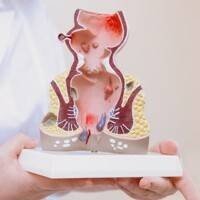Epidemiology
Urethritis is commonly seen in children, with studies showing that approximately 5% of all infants and young children experience the condition at some point. Of those, urethritis occurs equally between male and female infants under the age of 1. For children over the age of 1, the condition is more often seen in girls.
What is Urethritis?
Urethritis occurs when there is bacterial infection in the ureter, urethra, bladder, or kidney, causing inflammation. Delayed treatment may lead to serious complications such as nephritis or even kidney failure.
Symptoms
As infants and young children are unable to express themselves clearly, parents should pay special attention if their child is exhibiting poor appetite, crying excessively, showing abdominal bloating, or experiencing diarrhea or other gastroenteritis-like symptoms. For older children, symptoms may include:
Unexplained fever (alongside absence of other flu-like symptoms)
- Poor appetite
- Bad temper
- Frequent urination
- Pain during urination
- Burning sensation during urination
- Difficulty urinating
- Pelvic or abdominal pain
Causes + Risk Factors
- Bacterial infection: most cases of pediatric urethritis are caused by bacterial infection in the urinary tract, with E. coli being the most commonly seen bacteria. As E. coli is found in feces, it can easily infect the urethra if a baby’s diaper is not changed regularly. Other bacteria that can cause infection include proteobacteria, enterococcus, and staphylococcus aureus.
- Holding urine: children tend to hold urine, which overexerts the bladder muscles. Holding urine for long periods of time also allows bacteria to multiply, which can lead to infection in the urethra or bladder.
- Congenital abnormalities of the urethra: anomalies such as congenital urethral deformities and urinary tract obstruction may cause residual urine in the bladder, which facilitates growth of bacteria.
- Structural anomalies of the urethra: redundant prepuce (excess foreskin) can obstruct the flow of urine and lead to vesicoureteral reflux (urine flowing backwards)
Risk Factors
- Females: those with relatively shorter urethras are at higher risk of infection, with bacteria entering through the genitals
- Congenital abnormalities of the urethra: infant males with redundant prepuce (excess foreskin) or phimosis (tight foreskin)
Diagnosis + Treatment
As infants and young children are unable to articulate their symptoms, doctors will usually assess the condition through clinical diagnosis. If urethritis is suspected, the doctor may recommend a urine culture test, or even a blood test to eliminate other potential causes. If the doctor suspects that urethritis is caused by structural anomalies of the urethra, an ultrasound and/or X-ray may also be recommended for further examination.
Treatment
|
Medication |
If a child is diagnosed with urethritis and a urine test has confirmed the type of bacteria involved, the doctor will prescribe a course of antibiotics. A course of either oral or intravenous antibiotics generally lasts seven to 10 days. However, in the case of recurrent urethritis alongside vesicoureteral reflux (urine flowing backwards), long-term antibiotics (taken over a few years) may be prescribed. |
|
Surgery |
If a patient is already taking long-term antibiotics and still experiences recurrent urethritis, the doctor may suggest surgery, such as minimally invasive endoscopic Deflux injection or ureteral reimplantation to prevent vesicoureteral reflux. |
Prevention
- Encourage children to drink more water and urinate regularly
- Educate children on good hygiene practices, such as teaching girls to wipe properly and thoroughly after using the restroom – from front to back, to prevent spreading bacteria from the anus to the urethra




















